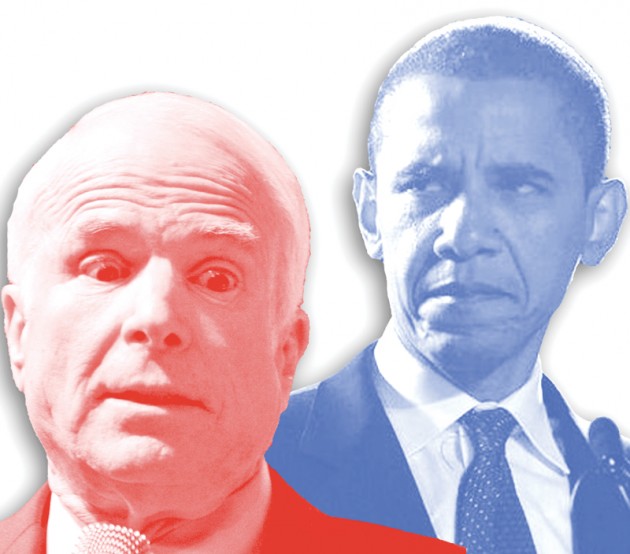The negative trend of American politics

Negative ads are nothing new, but this election season, they seem to be garnering extra attention.
The two main candidates have spent a record $1 billion on ads since the primaries. John McCain has focused 73 percent of his spending on negative ads and Barack Obama has spent 61 percent, according to politifact.com, a nonpartisan Web site that analyzes campaign claims.
That’s an increase for both parties. In the 2004 election, 64 percent of George Bush’s ads and 34 percent of John Kerry’s were negative.
In the first three months of the 2008 campaign season, McCain ran 76,192 negative ads and Obama ran 75,246, according to politicfact.com. Obama has had more funding to spend on advertisements and has been able to purchase more, including a half-hour infomercial and primetime spots. That means that though Obama has had more ads, a higher percentage of McCain’s ads have been negative.
“Politics seems to be getting more than its share of negative ads for the simple reason it tends to work,” said Dan Bagley, advertising professor and consultant. “The fear appAeal tends to drive someone away.”
An Associated Press story Friday about negative advertising’s influence on voters discussed a survey given to undecided voters after they watched negative ads by the McCain and Obama campaigns.
The McCain ads claim that Obama wants massive government. Meanwhile, the Obama ad claimed that McCain wants to tax health care benefits. The ads show the presidential candidates in unflattering black and white pictures and discuss bad choices each has made or unfavorable plans each has for the presidency.
Negative campaigns are part of American tradition. In 1828, during the seventh presidential campaign, John Quincy Adams and Andrew Jackson did not hold back. According to cnn.com, Adams called Jackson’s wife a woman of questionable morals and Jackson called Adams a pimp.
Though the tactic has been used throughout history, it has not changed many minds during this campaign, according to the AP story.
The article stated that “about 60 percent of so-called persuadable voters said the ads made them no more or less likely to vote for McCain or Obama. And about a third appeared to throw up their hands, saying they were less likely to vote for either candidate after watching the ads.”
“Negative advertising is a disappointment, but there’s no doubt it’s effective,” said Alan Awad, a freshman political science major working at the Obama/Biden tent at the Bull Market.
“It’s typical political tricks,” said Andrew Goldman, a student working at the McCain/Palin tent at the Bull Market.
Negative campaigning can create an almost necessary yet vicious cycle of attacks, Bagley said, as the parties take turns rebutting and barraging their opponent.
“If one side does, the other almost has to, or will be perceived as weak,” he said. “It almost begs an escalation — like a game.”
Many agree that other tactics should be used and that negative ads detract from issues of true importance to citizens.
Dana Blickensderfer, a junior majoring in mass communications, said the issues are more important.
“It’s sad that they have to do the negative ads — it’s not really necessary,” she said.
John Greer, political activist and author of In Defense of Negativity: Attack Ads in Presidential Campaigns, said to the Chicago Tribune that if McCain continues his negative advertising pattern, he will set a new record. In 2004, 50 percent of Bush’s ads were negative. During one week in October, 100 percent of McCain’s ads were negative.
A recent poll by SurveyUSA shows that 73 percent of people think negative campaign ads are inappropriate. Only 25 percent said they were appropriate campaigning. Of this same group, 34 percent said the attack ads made them not want to vote.
However, some students think negative ads are needed.
“Sometimes you have to say what’s wrong with the other party,” said Vanessa Rosa, a sophomore majoring biomedical major. “However, sometimes they pinpoint stupid things that are unnecessary.”






